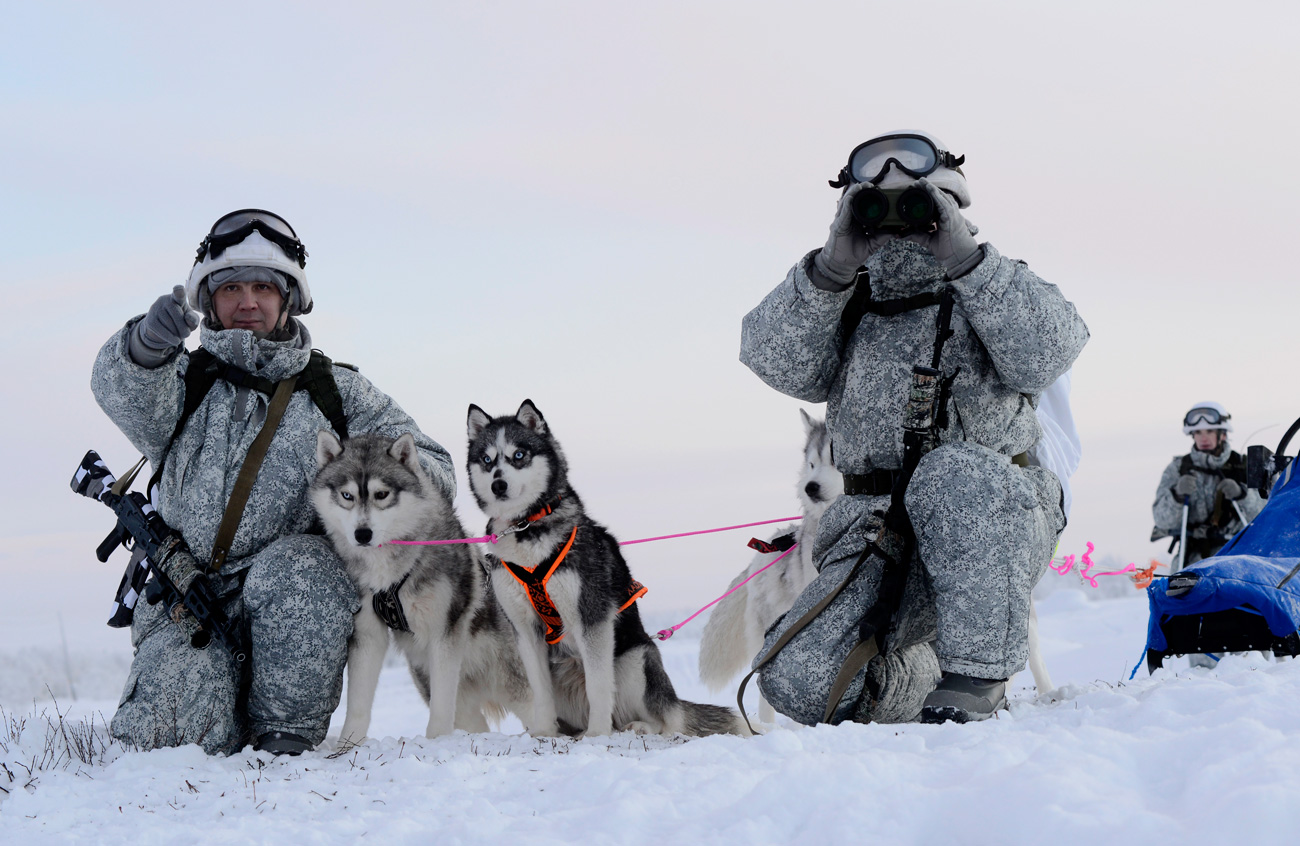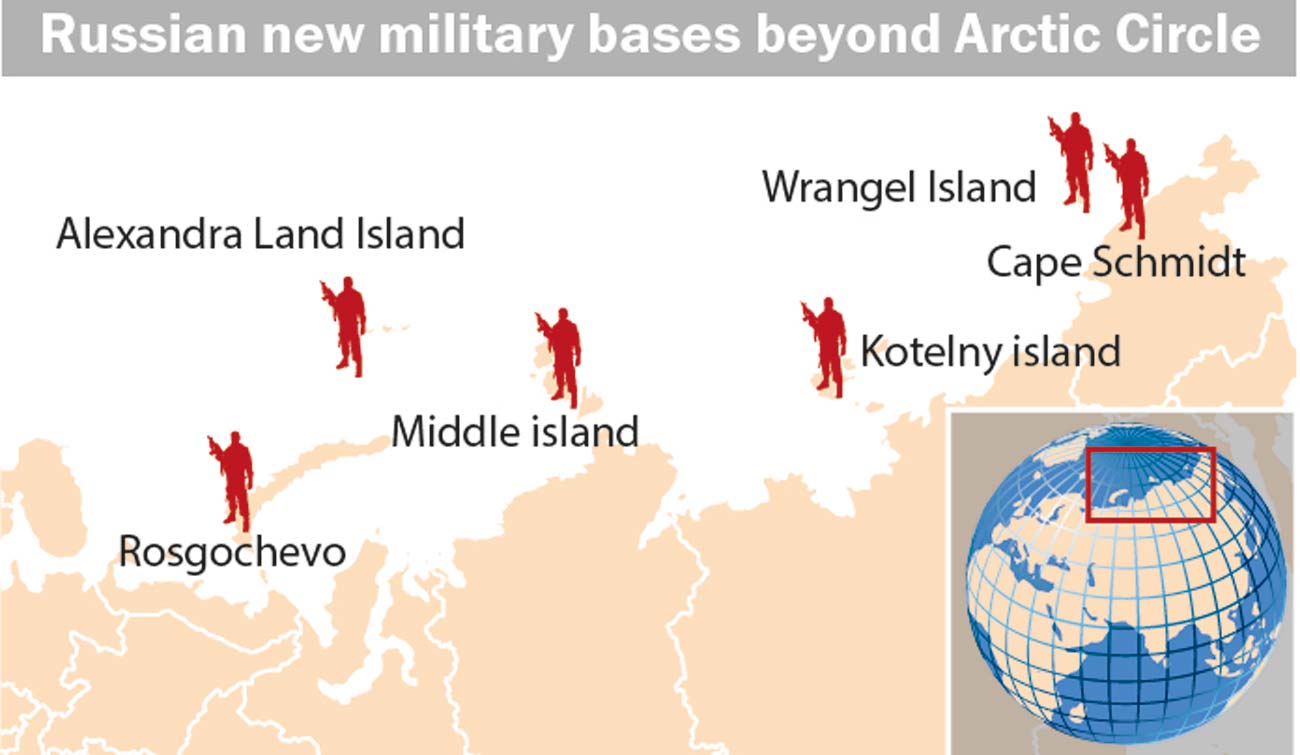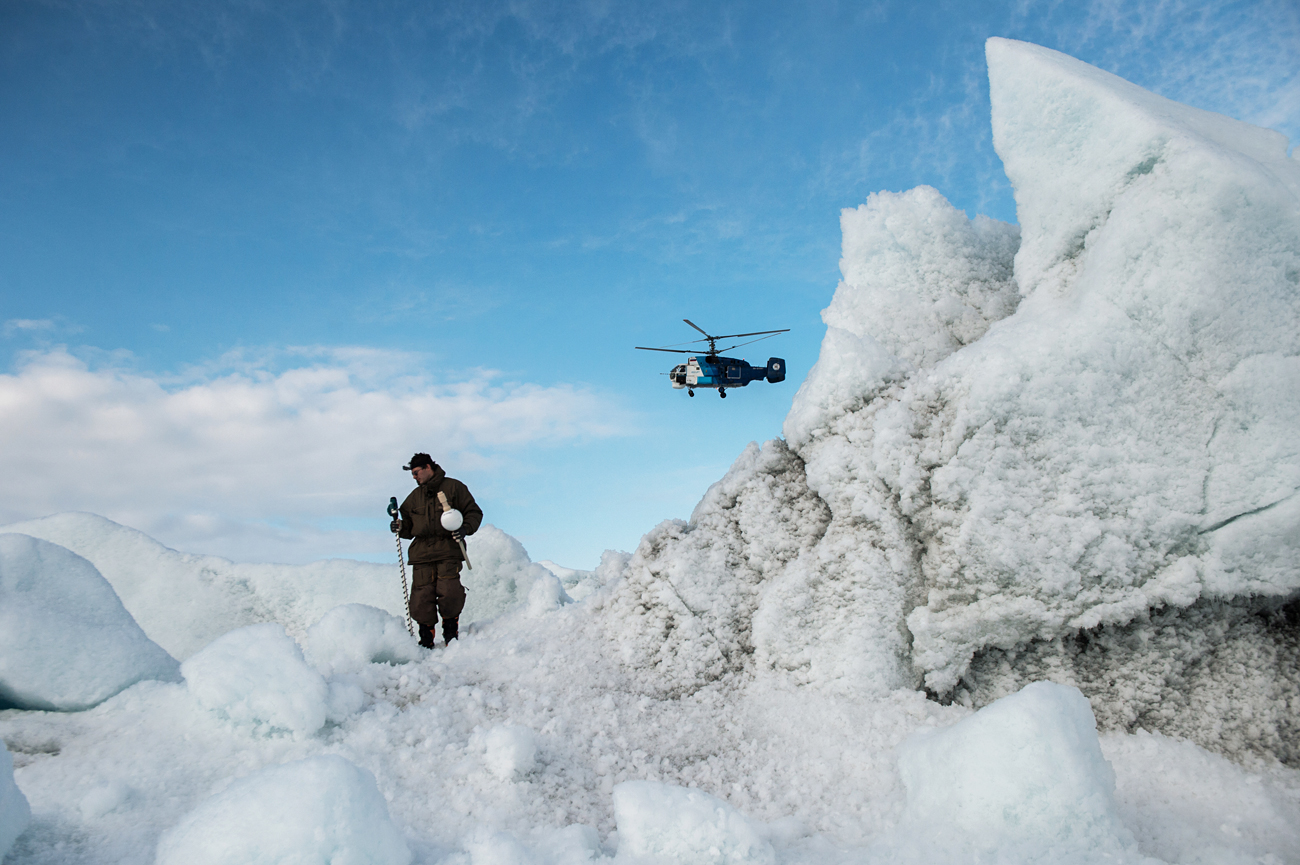Russia expands its presence in the Arctic

Reconnaissance unit members of the Northern Fleet's Arctic mechanised infantry brigade conduct military exercises near the Lovozero settlement.
Lev Fedoseyev/TASSIn December 2014, the Russian military made the decision to reassert its presence in the Arctic. Since that time, six new military bases have been opened, spanning Russia’s Arctic zone. They include bases on islands in the Kara and Laptev Seas in the Western Arctic as well as on Chukotka in the Russian Far East.
 Russia's military bases in the Arctic Source: RBTH
Russia's military bases in the Arctic Source: RBTH
“The military installations are being set up in order to strengthen Russia's anti-missile and anti-air defenses in that region,” said Dmitry Litovkin, military observer at newspaper Izvestia. A number of Russian defense contractors are currently developing weaponry for the Arctic, Litovkin said. According to him, a cruise missile launched from the Arctic region could reach Moscow in under 15 minutes.
Systems being developing include the Mil Mi-8AMTSh-VA Arctic version of the popular helicopter family and also Tor-M2E and Pantsir anti-aircraft and anti-missile missile systems.
Arctic Gold Rush
There is also an economic component to Russia's interest in the Arctic, said Major-General Pavel Zolotarev (Ret.), deputy director at the Institute for U.S. and Canadian Studies.
“Around 40 percent of the Arctic oil reserves are on Russian territory,” Zolotarev said. “Also, due to the effects of the global warming, in 10 to 15 years from now the Northeast Passage will turn into one of the primary maritime routes linking Europe and Asia.”
One of the key aspects of Russia's Arctic program is the building of new nuclear-powered icebreakers to partially replace the aging Soviet-built fleet.
“Nuclear-powered vessels will form the backbone of the Russian icebreaker fleet,” said Vadim Kozyulin of the Academy of Military Sciences. “Three next-generation icebreakers will be built; together with the upgraded vessels which were built in the 1990s, they will ensure the safety of shipping in permafrost regions.”
Russia is currently building several Project LK-60 nuclear-powered icebreakers. The lead ship, the Arktika, was launched earlier this year.
“One more vessel of this project is under construction, and there are plans to develop an even larger icebreaker,” Kozyulin said. “She will be designated LK-110Ya Lider, and will have an ice speed of 14 knots [around 24 km/h], against the Arktika's 6 knots.”
The new icebreaker will be designed to clear passages in ice up to 150 feet wide. “Thanks to her broad hull capable of breaking ice up to 4.4 m thick, the Lider will ensure safe navigation of large vessels along the Northern Sea Route all year round,” Kozyulin added.
A source in the defense industry told RBTH that the new icebreaker project has already been approved, and it will begin in 2017.
The first new icebreaker is expected to join the fleet in the 2020s.
“The only two minor technical questions left are optimizing the internal space and arranging the equipment; these will not affect the ship's performance,” the source said.
According to the source, the Lider will be able to lead the largest members of the Aframax tanker family through the Northern Sea Route.
“With between 80,000 and 120,000 ton displacement and a 45-meter-wide [147 feet] hull, these tankers form the mainstay of Southeast Asian maritime operators' fleets,” the source added.
Apart from leading convoys of vessels through ice, icebreakers can also be utilized as rescue ships.
In 1983, a Project 10520, Arktika-class icebreaker rescued 50 vessels trapped in ice, including the Lenin, the first nuclear-powered icebreaker.
Project 10520 icebreakers can also be converted into naval cruisers. The Sovetskiy Soyuz constantly carries part of the equipment necessary to do so; the rest is kept at a ground base.
Read more: Russia to develop icebreaker able to clear passage through 5-meter ice>>>
Subscribe to get the hand picked best stories every week
All rights reserved by Rossiyskaya Gazeta.
Subscribe
to our newsletter!
Get the week's best stories straight to your inbox

